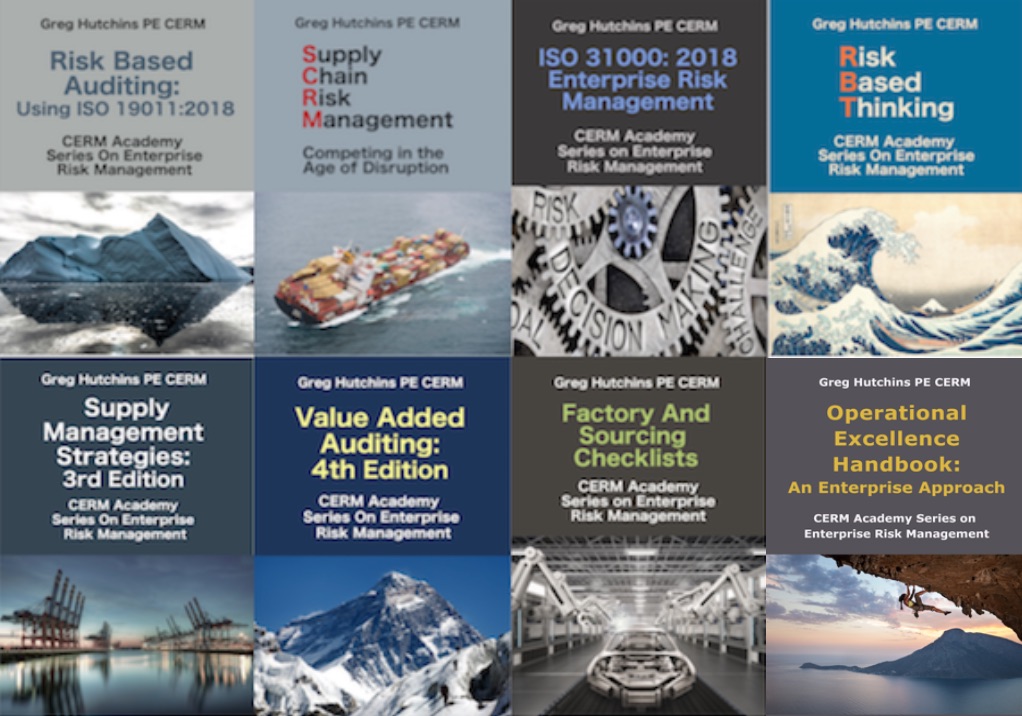 Just think of all the changes occurring in your organization. New regulations. Changing customers with new product preferences. New competitive product offerings. New technologies. New branding. New business platforms. New business models. Compressed lifecycles. Change is no longer gradual. Change is rapid and abrupt.
Just think of all the changes occurring in your organization. New regulations. Changing customers with new product preferences. New competitive product offerings. New technologies. New branding. New business platforms. New business models. Compressed lifecycles. Change is no longer gradual. Change is rapid and abrupt.
Supply Chain Risk Management (SCRM) is being able to adapt to disruptive changes occurring in supply chains, management, and even all professions (quality, engineering, supply management, etc.). As well, we believe general management is evolving into risk management.
A few years ago, we believed competitiveness was the supply chain paradigm buster. We even wrote in Supply Management Strategies:
“Capitalism, competitiveness, dot.com profitability, and innovation are today’s paradigm busters. They are what drive today’s New Economy. Capitalism is triumphant in almost every activity in every corner of the world. National boundaries are disappearing as goods and services move freely. Competitiveness and innovation are continually destroying the current business paradigm. Just as a business feels it has found its niche and understands what is going on, supply management and sourcing rules change again.”
WHAT IS VUCA?
Supply Chain Risk Management reflects the major changes occurring in today’s economy and marketplace. What do I mean? ISO 9001 is an international Quality Management System standard. When ISO 9001 came out in 1987, the focus was on consistent quality. It was a great idea for its time. Quality management, quality assurance, and quality control were essential to a company’s competitiveness.
More than 30 years later, the emphasis is how to compete and innovate in a time of Volatility, Uncertainty, Complexity, and Ambiguity (VUCA) or what we call VUCA time.
Examples of VUCA are all around us. As an example, a Black Swan event is a big bang or VUCA disruptor to an organization. A Black Swan is a high consequence and low likelihood event that can disrupt a company’s supply chain. A Black Swan can be climate change, hurricane, loss of a final customer, or loss of a critical supplier. As you can imagine, you are going to hear a lot about VUCA in this book.
In a world with interconnected supply chains, business and operational risks surface often. Why? Unexpected events occur more frequently. For example, earthquakes, tsunamis, oil spills, increasing global warming, and loss of a single source of products or services can rapidly impact a company and its supply chain potentially undermining the company’s reputation and its financials.
Exposure to global risks is increasing and the consequences are ever more threatening. Also, something as simple as 100 year events are occurring more frequently. VUCA is the driver of all disruption as shown in the below figure. That is why we say: “we live in the age of VUCA.”
VUCA can impact downside risk as well as upside risk or opportunity risk. Opportunity risk may include: mergers, acquisitions, product development, innovation, investment opportunities, infrastructure build out, and the costs of borrowing for capital projects. Opportunity risk is becoming so critical that investors are demanding higher levels of risk assurance and transparency from bond rating agencies such as Standard & Poor’s, which now uses Enterprise Risk Management to evaluate companies. Newspapers also use the expression ‘the risk of an overheating economy’, which is upside risk.
VUCA EXAMPLES
Below are several examples of SCRM VUCA:
- Time VUCA. Time compression is impacting supply chains in many sectors. In retail, fashion design used to involve four seasons. Now, fashion design firms provide new dresses weekly to customers.
- Geographic VUCA. From supply chain perspective, disruption is often a country specific issue. For example, in India the drivers of disruption are regulatory, money issues, dependence on a single source, language issues, security issues, water availability, and even technology differences.
- Climate VUCA. Supply chain disruptions can also come about from unexpected sources. Climate change is causing droughts in India, Australia, United States, China, and many parts of the world. In India, the drought is impacting 300 million people or a quarter of India’s population after 2 monsoons delivered low rainfall. Water supply disruptions can cripple domestic production and services for global supply chains requiring water and power.
Bio:
Greg Hutchins PE and CERM (503.233.101 & GregH@QualityPlusEngineering.com) is the founder of:
CERMAcademy.com
800Compete.com
QualityPlusEngineering.com
WorkingIt.com
He is the evangelist behind Future of Quality: Risk®. He is currently working on the Future of Work and machine learning projects.
He is a frequent speaker and expert on Supply Chain Risk Management and cyber security. His current books available on all platform are shown below:
